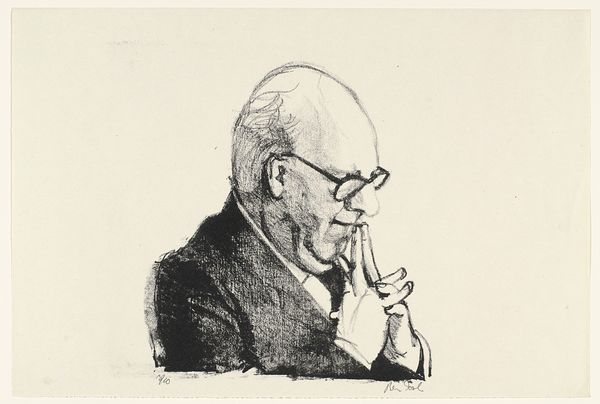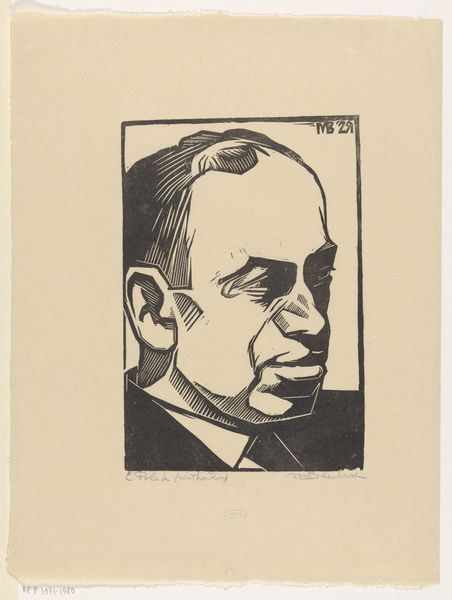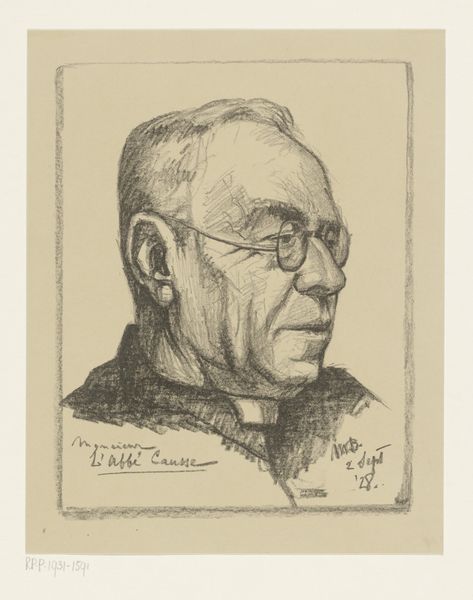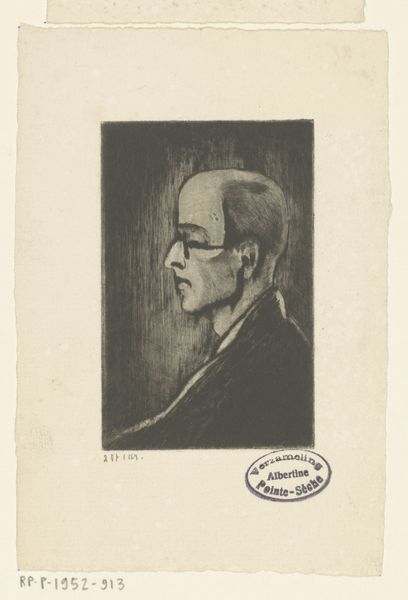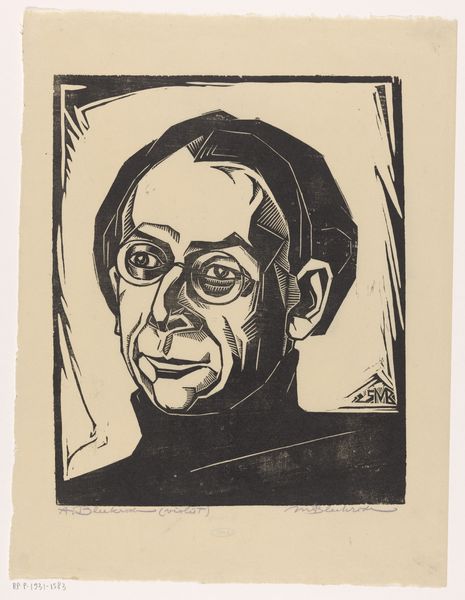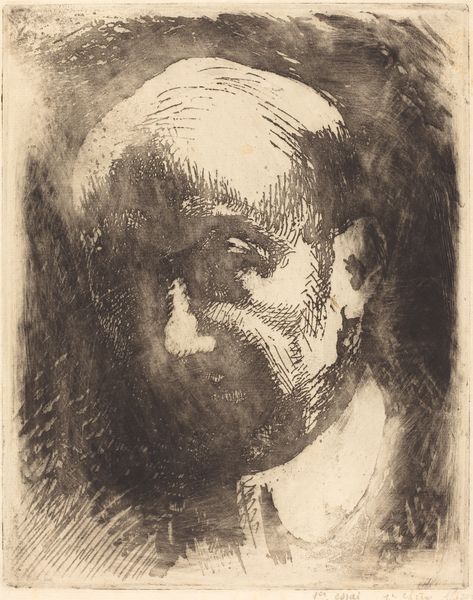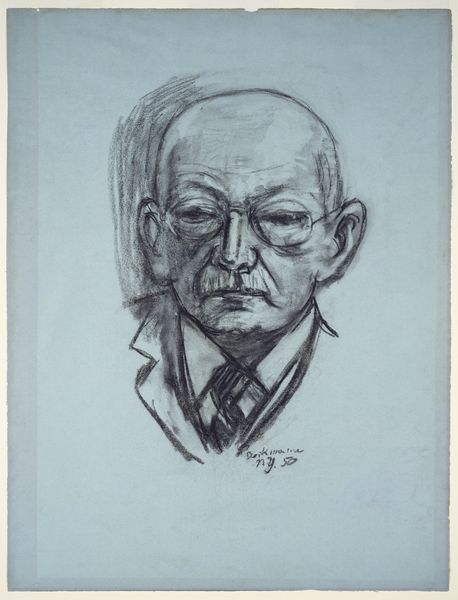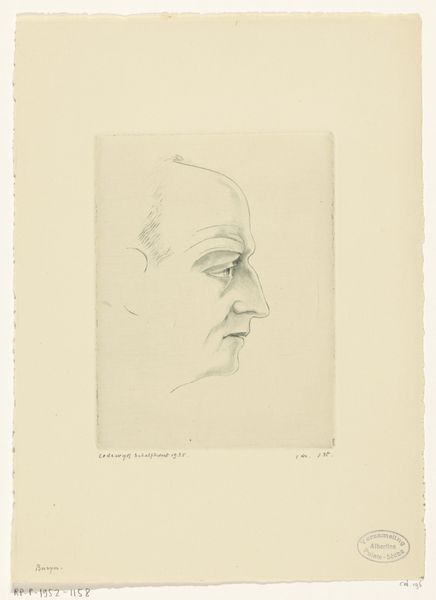
drawing, print, woodcut
#
portrait
#
drawing
# print
#
caricature
#
caricature
#
expressionism
#
woodcut
#
line
#
portrait drawing
Dimensions: height 295 mm, width 210 mm
Copyright: Rijks Museum: Open Domain
Meijer Bleekrode made this woodcut portrait of Jacques Karel Rensburg in 1930. The stark contrast between the black ink and the pale paper creates a really graphic image, which is heightened by the sharp, angular lines used to define the face and clothing. Looking closely, you can almost feel the mark of the tool that carved the lines into the wood. Bleekrode isn't trying to hide the process; rather, he revels in it. It's like he's saying, "Here's how it's made, and here's the energy that went into it." Notice the way the light catches the planes of Rensburg's face, the bold cuts that define his features, like the strong line of the brow, or the ridge of the nose. Each cut is deliberate, carving out a sense of depth and character. It's hard not to think of the German Expressionists when looking at this portrait, like Kirchner or Heckel, those guys who were all about raw emotion and bold simplification. Bleekrode is doing something similar here, stripping away the details to get at something more essential about his sitter. It’s a conversation across time, a nod to the past while forging its own path.
Comments
No comments
Be the first to comment and join the conversation on the ultimate creative platform.


